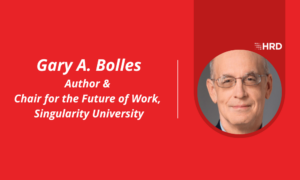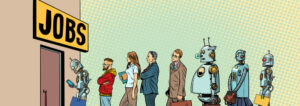Ebay and Dow predict the future with HR analytics
- 4 Min Read
Ebay and Dow have explained how important the use of HR metrics is to their organisations by establishing the cost of employees leaving the business and predicting which people that will be.
- Author: Owain Thomas
- Date published: Jun 8, 2016
- Categories

Ebay and Dow have explained how important the use of HR metrics is to their organisations.
Dow has been able to establish the cost of employees leaving the business and shared its people analytics with managers around the business.
Meanwhile Ebay is able to predict which people are most likely to leave the company given a range of internal and external factors.
Speaking at the European HR Directors Summit, the multi-national pair discussed how they had introduced the use of analytics and what they were using it for.
Dow was one of the pathfinders in HR analytics by making a move into the area when there was very little technology available.
Dow corporate vice president of human resources and aviation Johanna Soderstrom (pictured) explained why it was vital to do so.
“Success is measured in metrics. Everything you have has to have metrics. Figure out what every extra day costs you or what every regretted loss costs you,” she said.
“We can put a price tag on every single person who leaves within the first year. We know exactly what it costs us. And those figures, my friends, are very powerful in the boardroom.”
Early start
Soderstrom revealed that the company began its analytics work three years ago, but that having people to tell the story was vital as well.
“Three years ago when everyone was talking about HR analytics, we started off down on this journey,” she said.
“There was nothing there; we created it in house because we couldn’t get what we wanted. Now we have an established product all the analytics, but we don’t have the people who can tell the story.
“We need that, because if you can’t tell it, you’re missing out the point of creating value,” she added.
Soderstrom made the business case for investing in the HR analytics system by showing what the organisation would be able to get out of the results.
This included a strong emphasis on the costs of people movements.
She said this success managed to change the profile of HR with the business leaders and now the system had been rolled out across the organisation.
“What happened was we forced the HR organisation to change because suddenly leaders had exactly the same data at their fingertips as HR used to have, and you know the HR saying that data or information is power.
“Suddenly leaders have the same data.
“The whole idea was to make the change so that HR is not there to sit on your pivot tables – HR is there to help you look at the data and make sense of it,” she added.
HR opportunity
This was echoed by Ebay vice president of HR international Tom Brown.
He noted that HR needed to take advantage of all the data available and its possible uses.
“We have a fantastic opportunity to use the data,” he said.
“Our employees are using it, putting data in to Linkedin and Glassdoor. How do you tap into that? How do we understand it?”
He continued by revealing that Ebay was able to predict attrition rates using a wide variety of internal and external data.
“One of the areas where Ebay is probably in the lead is we have a fantastic team that does predictive analytics,” Brown said.
“So this is not about reporting, this is predicting, and they do a whole load of work and one of the pieces is around attrition. They bucket people into high or low risks of attrition – a high risk attrition is four times as likely to quit as a low risk.
“We have lots of pain points: How long have they been in the country? Has their manager left recently? Have they taken a sabbatical recently? Then we look at other data – like share prices – what’s happened with the Nasdaq?
“So we really bring a lot of bits of data. And this team is full of data scientists – not HR,” he added.
How Linkedin accurately predicted future recruiting needs and saved millions









